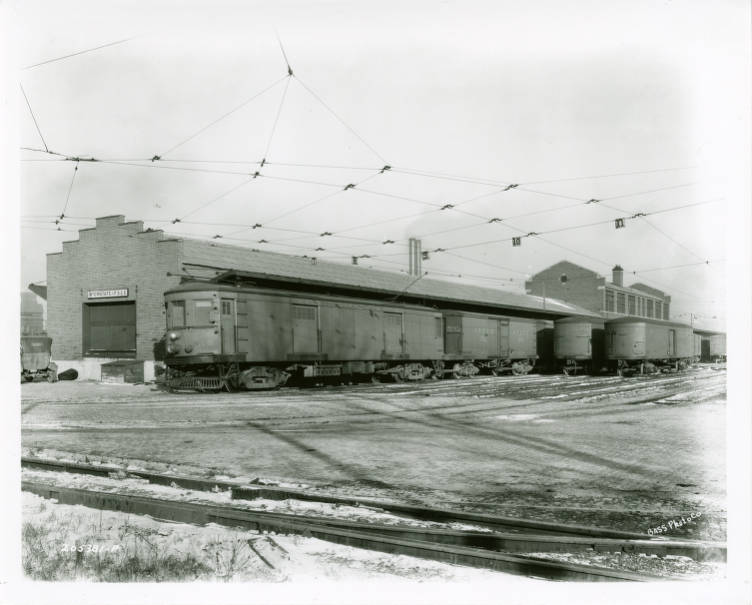Public Service Indiana, one of the state’s largest electric utilities, was headquartered at the in Indianapolis for its first four decades. The predecessors of Public Service Indiana were the small, central light plants and electric street railways that sprouted up around Indiana between 1880 and 1900. By 1913, 210 central electric stations were operating in Indiana.

In 1912, Samuel Insull of Chicago organized the Interstate Public Service Company in Indianapolis. Insull, a British native and early employee of Thomas A. Edison, was a proponent of centralized control of electric and gas utilities. He established Interstate to operate the Indianapolis, Columbus, and Southern Traction Company, which provided interurban electric railway service between the Hoosier capital and Louisville. Insull also consolidated numerous electric and gas utilities from New Albany to Lafayette into Interstate. As the 1920s advanced, the electric and gas utilities increased in size while the interurban railway waned. Insull’s empire across the U.S. was overextended, and in April 1932, his bankers forced the giant utility holding company into bankruptcy.
Interstate changed its name to Public Service Indiana in 1931. Under Chicago banker Robert Gallagher the company reorganized in 1941 as Public Service Company of Indiana, Inc. (PSI). On September 8 of that year, the company’s last two interurban cars were involved in a head-on collision near Columbus. Freed of the interurban business and forced to divest itself of its gas business in 1945, PSI concentrated on electric utility service. It built or expanded large coal-fired generating stations near Gibson, Cayuga, Noblesville, New Albany, and Vincennes. The growth of electric power demand during the 1950s and 1960s in the 69-county area served by the company made PSI one of the states’ largest utilities during the period. It was also during this time that PSI moved to new headquarters in , Indiana.

The late 1970s and 1980s were a difficult period for electric utilities between skyrocketing interest rates and double-digit inflation. Adding to this, PSI lost a substantial sum, $2.5 billion, after having to abandon work on the Marble Hill Nuclear Power Station near Hanover, Indiana. Construction began in 1977, but ended in 1984 after loss of local support, protest from environmental advocacy groups, and increasingly overwhelming costs.
In 1990, the company announced the formation of PSI Energy, Inc., a holding company to control the operating utility and other businesses. Still serving 600,000 customers in a 69-county area, two years later the company announced a proposed merger with Cincinnati Gas and Electric Company, which would have created the nation’s 13th largest investor-owned electric utility. In April 1993, however, , or IPALCO, announced its own $1.5 billion hostile takeover bid. Both plans were withdrawn a few months later after an acrimonious and highly publicized struggle. Ranked the 12th largest public company in Indiana with 1992 operating revenue of $1.1 billion, PSI continued to serve a combination of homes and businesses throughout central and northern Indiana while providing employment to some 4,400 Hoosiers.
On October 24, 1994, PSI merged with Cincinnati Gas and Electric Company (CG&E) and its subsidiary–Union Light, Heat, and Power to form CINergy Corporation. PSI and CG&E both maintained their headquarters in Plainfield and Cincinnati respectively but worked together under CINergy to save money, lower rates for consumers, and create a more efficient utility service. The combination made this new company the 13th largest investor-owned electric utility in the nation.
CINergy Corp. was acquired in 2006 by Duke Power for $9 billion. Under this merger, Duke Power, Cincinnati Gas & Electric, Union Light, Heat and Power, and PSI Energy all became Duke Energy.

Help improve this entry
Contribute information, offer corrections, suggest images.
You can also recommend new entries related to this topic.

